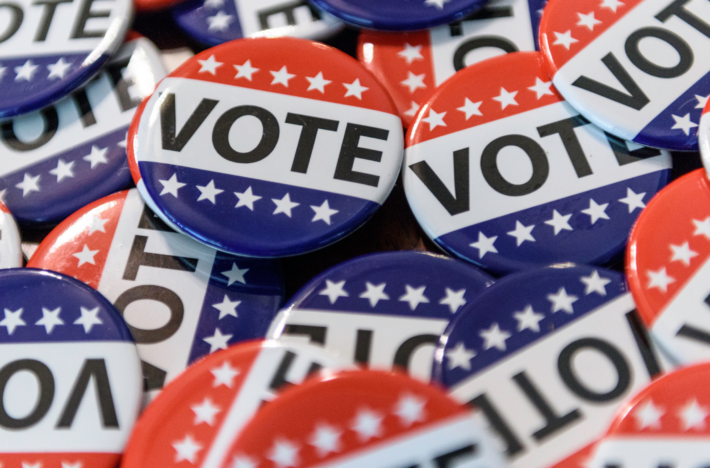This article was originally published on Forbes.com.
In a presidential election year with a challenging economic environment and tensions growing across the planet, U.S. consumers are understandably uneasy. Advertisers are facing a challenging scenario that requires agility, foresight and possibly a touch of ESP. Understanding the dynamics of digital advertising—and how real-world events impact them—is critical to success now more than ever.
Election Year Drama
The atmosphere of an election year is always charged with heightened emotions and amplified media consumption. Consumers actively engage in content around topics they care about, research candidates and issues, and watch coverage of political events and debates. This surge in engagement opens up both opportunities and challenges. For brands and advertisers, it translates to intensified competition and increased advertising costs. It also heightens the need for caution regarding placements and adjacencies.
Political campaigns dominate traditional and digital media, vying for voter attention. Consequently, nonpolitical advertisers often find themselves competing for a share of voice and facing inflated ad rates due to heightened demand. On top of that, brands have to be vigilant about where ads appear, as advertising on certain outlets may be construed as a political endorsement. Similarly, a placement adjacent to a political ad or hot-button topic could have a positive effect or a harmful one, depending on the viewer.
Spending On Digital Political Ads Is Expected To Surge
When candidates began capitalizing on digital media in the early 2000s, the landscape was still nascent, so there was little impact on inventory or pricing. It wasn’t until the 2016 presidential election that digital ads became a staple. That year, internet advertising also saw a spending surge, leading to increased competition and higher costs. Political ad spending continued to grow, reaching $8.5 billion in the 2020 election cycle.
This election, political ad spending is expected to grow by more than 30% from 2020 to $12.32 billion, with digital media accounting for almost a third of it. The digital investment is expected to spike 156% over 2020 levels, hitting $3.46 billion. Of that, $1.56 billion will likely go to connected TV, an increase of over 500% since 2020. Google is expected to see $553.2 million; $605 million will likely go to social media networks.
This increase in spending across the digital advertising landscape will have a monumental impact on brands, which will have to navigate fluctuations in competition, cost and inventory.
Will Media Fatigue Have An Impact?
Even as media consumption remains high, there is another hurdle for advertisers: fatigue and polarization. Exhaustion from an overload of politics or feeling misinformed may lead some audiences to disengage to avoid political news. Some users may pivot to platforms with lighter, fluffier content instead. This diversion can present challenges to finding your customers where they are, but you’ll also have opportunities to test new tactics, like contextual advertising, curated site lists or connected TV.
During the last presidential election, more people than ever reported being exhausted with the user experience on social media due to political content, though it did not decrease social media engagement overall. However, this election may play out differently. Meta appears to have recognized how politics can dominate its platforms and is intentionally shifting its platforms away from political discourse. It’s also requiring advertisers to disclose that their campaigns promote political or social issues, and is ceasing to recommend political content in feeds on Instagram and Threads. Per Adam Mosseri, Head of Instagram, “Our goal is to preserve the ability for people to choose to interact with political content, while respecting each person’s appetite for it.” It will be interesting to see how all this affects advertisers.
What Should Advertisers Do?
It may be tempting to sit it out or slow it down, but resist. Pulling back advertising spend during challenging times can hinder growth. As evidenced by research from McKinsey, marketing during uncertain times can drive resilience. Maintaining a thoughtful presence across advertising channels will yield dividends during challenging times as it can help you create more distance between yourself and your competitors, which pays off in the long run. Watch campaigns closely, be patient and move quickly when you need to.
During an election year, it can be tough to test and learn effectively, but you can’t count on the things that have always worked to remain effective, so you must adapt.
A successful playbook includes some key activities:
- Critically analyze every element of every ad, keeping in mind context and adjacencies. The tone and messaging of your ads will be closely scrutinized this year; accept that you’ll need to be more vigilant in putting the right campaigns out there and actively monitoring the response.
- Take the time to review your media partners, whitelists and blocklists. Set dedicated time on your calendar to do this on an ongoing basis.
- In the spirit of failing fast, when testing a new tactic or campaign, keep budgets modest at first and be prepared to pull non-performers quickly.
- Be more agile. You will need to optimize campaigns more frequently and with a more critical eye during this time. Prepare your resources and establish new processes to foster a more agile campaign management approach.
Brands can thrive, even amid the uncertainty of an election cycle, by studying the past, staying tuned in to customer behavior and finding every opportunity to outdo their competitors. The savviest advertisers are the ones who take advantage of every relevant trend and opportunity, safeguard their brands more effectively, and optimize most efficiently to get results. Accept uncertainty, but face it with the right playbook, and you can position your brand for success during turbulent times—and thrive when calmer days eventually arrive.


